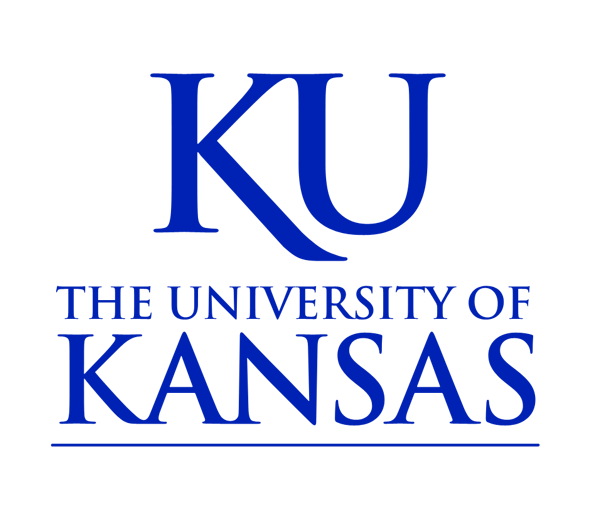From the Office of Public Affairs | http://www.news.ku.edu
Headlines
KU geneticist receives Guggenheim Fellowship to work on 2nd book
LAWRENCE — Jennifer Raff, associate professor of anthropology at the University of Kansas, was recently awarded a prestigious Guggenheim Fellowship for her work on the history of human populations through sequencing the genomes of contemporary peoples and their ancestors. The fellowship will allow Raff to work on a follow-up to her debut, “Origin: A Genetic History of the Americas,” a New York Times 2022 best-seller. As she works on her second book, tentatively titled “The Ancients,” Raff said one of her goals is to dispel the notion of biological races.
KU Field Station marks 75th anniversary with Visitors’ Day April 27
LAWRENCE — In celebration of its 75th anniversary, the University of Kansas Field Station will open its core research area from 10 a.m. to 2 p.m. April 27 for its first public Visitors’ Day in more than 20 years. Members of the public will be welcomed behind the scenes to tour restricted-access research areas. Visitors should check the Field Station’s Facebook and Instagram pages or the KU Calendar event page for updates in case of inclement weather.
Study shows long-standing links among disease, race, class, infrastructure
LAWRENCE — Links — both real and imagined — between race and disease are far older than the COVID-19 pandemic. A University of Kansas researcher says her new study of a 19th century Cuban aqueduct project during a cholera outbreak proves this, first in the way poor people of color were looked down upon as vectors of disease spread and then in how they were victimized by “infrastructural violence.” The work was published in Peripherica — A Journal of Social, Cultural, and Literary History.
Full stories below.
————————————————————————
Contact: Ranjit Arab, College of Liberal Arts & Sciences, ranjit.arab@ku.edu, @KUCollege
KU geneticist receives Guggenheim Fellowship to work on 2nd book
LAWRENCE — Jennifer Raff is on a mission to make genetic research on human evolution something everyone can understand.
Raff, associate professor of anthropology at the University of Kansas, was recently awarded a prestigious Guggenheim Fellowship for her work on the history of human populations through sequencing the genomes of contemporary peoples and their ancestors.
The fellowship will allow Raff to work on her second book, a follow-up to her successful debut, “Origin: A Genetic History of the Americas,” which also explained her research in terms relatable to general audiences by combining science and storytelling. That book was listed for two weeks on the New York Times Best Sellers list for nonfiction titles.
As she works on her second book, tentatively titled “The Ancients,” Raff said one of her goals is to dispel the notion of biological races.
“I’m not only telling the stories about human evolution and genetics, but I’m also trying to focus more directly on the concept of biological race and what DNA shows in terms of how we are related and whether these biological races are actually a useful way of describing genetic variation. Spoiler alert: They’re not,” Raff said.
The John Simon Guggenheim Memorial Foundation created the fellowships for midcareer individuals who have demonstrated exceptional capacity for productive scholarship or exceptional creative ability in the arts and exhibit great promise for their future endeavors. Each year, the foundation receives approximately 3,000 applications and awards approximately 175 fellowships.
Arash Mafi, executive dean of KU’s College of Liberal Arts & Sciences, said Raff’s fellowship is a testament to the quality of scholarship being conducted across the College.
“Professor Raff is doing what we encourage all of our researchers to do, and that is to make their complex research findings accessible to general audiences,” Mafi said. “It’s a very effective way to have a better informed, better prepared citizenry.”
Raff said receiving the prestigious award will help take her research to the next level.
“I think it’s going to be career changing for me,” she said. “It is providing me with monetary support to travel to some of these sites in Europe, Asia and Africa, so I can actually study them and write about them firsthand. I’m really excited to see what will develop.”
Raff also plans to take a small camera crew with her to these important sites in evolutionary history, which in turn will improve the quality of education she provides to her students at KU, she said.
“We will be filming the sites and I’ll do a little bit of discussion at each one of these sites, and perhaps some interviews with the archaeologists and paleontologists that are conducting the research, and all of that will be folded back into my courses,” she said.
Raff said she is grateful to the Guggenheim Foundation and to many at KU for making her next book possible by freeing up her time so she can focus on research, writing and visiting the sites over the next two semesters.
“I want to extend my deepest thanks to my amazing colleagues and chair in the Department of Anthropology and the Indigenous Studies Program, the KU administration, the KU Center for Research, the Institute for Policy & Social Research, KU Center for Genomics and the College for all their wonderful support,” she said.
-30————————————————————————-
The official university account for X (formerly Twitter) is @UnivOfKansas.
Follow @KUnews for KU News Service stories, discoveries and experts.
————————————————————————
Contact: Kirsten Bosnak, KU Field Station, 785-864-6267, moonfarm@ku.edu, @KUFieldStation
KU Field Station marks 75th anniversary with Visitors’ Day April 27
LAWRENCE — In celebration of its 75th anniversary, the University of Kansas Field Station will open its core research area from 10 a.m. to 2 p.m. April 27 for its first public Visitors’ Day in more than 20 years. Members of the public will be welcomed behind the scenes to tour restricted-access research areas.
Stations will be set up along a ¾-mile gravel “research road” from the Armitage Education Center to the Frank B. Cross Reservoir. Participants may walk at their own pace (the entire route or just part of the way) and talk with researchers, who will discuss their work with visitors.
Restrooms will be available inside the Armitage Education Center, and limited-edition 75th anniversary shirts will be available while supplies last.
Visitors should check the Field Station’s Facebook and Instagram pages or the KU Calendar event page for updates in case of inclement weather.
The Field Station’s 1,650-acre core research area is headquartered at 350 Wild Horse Road, about 15 minutes north of downtown Lawrence. This area was initiated as a biological field station in 1947 with the arrival of Henry Fitch, herpetologist, at KU and the establishment of the 590-acre tract now known as the Fitch Natural History Reservation.
The 3,200-acre Field Station also includes the Baldwin Woods Forest Preserve and the Anderson County Prairie Preserve. It is managed by the Kansas Biological Survey & Center for Ecological Research, a KU research center housing a variety of environmental research labs and remote sensing/GIS programs in Takeru Higuchi Hall, Smissman Labs and the West District greenhouse.
-30-
————————————————————————
Subscribe to KU Today, the campus newsletter,
for additional news about the University of Kansas.
http://www.news.ku.edu
————————————————————————
Contact: Rick Hellman, KU News Service, 785-864-8852, rick_hellman@ku.edu, @RickHellman
Study shows long-standing links among disease, race, class, infrastructure
LAWRENCE — Links — both real and imagined — between race and disease are far older than the COVID-19 pandemic. A University of Kansas researcher says her new study of a 19th century Cuban aqueduct project during a cholera outbreak proves this, first in the way poor people of color were looked down upon as vectors of disease spread and then in how they were victimized by “infrastructural violence.”
Ninel Valderrama Negrón, assistant professor in KU’s Department of Spanish & Portuguese, and her former graduate student Riya Mohan, now the Margolis Health Policy Scholar at Duke University, co-wrote the article “The Impact of the 1833 Cholera Epidemic on Havana’s Vulnerable Populations and Urban Landscape,” published in the journal Peripherica — A Journal of Social, Cultural, and Literary History.
“The structural violence made evident (here) … makes analysis of past societies, through the lens of race, gender and class, vital for the creation of policy,” the authors write.
The article examines a series of 19th century records about the construction of the Fernando VII Aqueduct — which complemented the older aqueduct called Zanja, constructed in 1592 — that brought water from the outskirts to the edge of the walled old city of Havana. That was where upper-class types had already fled from inside the walls when they thought cholera was spread through the air. No one knew it was a waterborne disease until 1854.
Valderama said the documents she studied clearly show that not only did the extension of the aqueduct destroy an Afro-Cuban neighborhood near the port, but when completed it provided far more taps, per capita, to the neighborhoods of wealthy, light-skinned colonial Spaniards than to Cubans of color.
“Infrastructure is invisible, but it governs our daily lives in ways we don’t realize until something goes wrong,” Valderrama said. “But it’s always there, and it’s always dividing people in ways we need to pay more attention to.”
Other contemporaneous official documents, held at Duke University’s Rubenstein Library, Spain’s National Archives and its Military Archive in Madrid, contained detailed information about the race, gender and class of the victims of the cholera epidemic at the time, the KU researcher said. They show, statistically speaking, that the poor, Black and mixed-race female population bore the brunt.
“In this epidemic, there were hospitals in wealthy neighborhoods where there were 10 patients for every doctor,” Valderrama said, “and in the Black neighborhood, it was 500 patients for one doctor. So that is how infrastructure can be violent … not only water infrastructure, but also medical infrastructure.”
Valderrama said she hopes to turn this research into a public-facing humanities project with a web-based interface that shows visually and easily the links between race, class, infrastructure and disease.
“This project began during the COVID pandemic,” Valderrama said. “My partner is of Asian descent, so she was suffering all the rhetoric about illness and race related to that. She really felt it that it was necessary not only to be an article, but to be also a public way of showing that these have been around for a long time.”
-30-
————————————————————————
KU News Service
1450 Jayhawk Blvd.
Lawrence KS 66045
Phone: 785-864-3256
Fax: 785-864-3339
kunews@ku.edu
http://www.news.ku.edu
Erinn Barcomb-Peterson, director of news and media relations, ebp@ku.edu
Today’s News is a free service from the Office of Public Affairs




